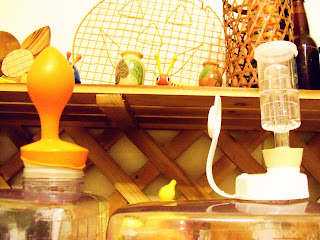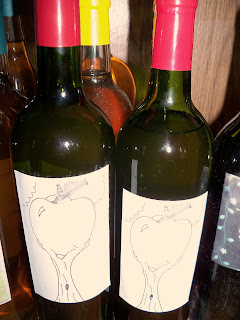 it! Give it a try!
it! Give it a try!Let's break winemaking down into steps.
Step one: Sanitize your space, your utensils, and the container that all of your ingredients are going into.
Step two: Put your juice and any other ingredients like sugar, water... into the container.
Step three: Put in your yeast (the temperature of the juice must be between 65 and 80 degrees Fahrenheit for most yeasts to do their work).

Step four: Cover the container so that air can get out, but not in. How? They make special airlocks for this, but a balloon with some pinholes poked in it usually works just fine.
Step five: Wait (It might take eight days, it might take forty. This depends on your yeast, the temperature, the amount of sugar in the juice... all sorts of things. Just wait until the yeast stops working, and the wine isn't as cloudy.).
Step six: Bottle your wine, keeping as much yeast out as possible. If there is a lot of yeast floating around in the wine, then its probably not ready to bottle.
Step seven: Put the bottles somewhere cool to age for a while. Aging will depend on what you want out of your wine, and what kind of wine it is.
Note on Aging: My peach wine is great at ten months old, my light mead is good at two months, my pumpkin wine takes over a year to develop its smooth vanilla taste. You can drink the white hillbilly wine after a month, and it tastes like a two dollar bottle of wine, or you can drink it at ten months old, and its about as good as anything you can buy at the wine shop for ten dollars.
Rules: If you follow these basic rules, then you're bound to have something that, given time, tastes pretty good:
1.) Cleanliness, you must make sure everything you do is sanitary, especially that you ferment your wine in a sanitary container

2.) Do not use juices or concentrates with preservatives, these often kill your yeast, make it difficult to ferment, or cause your yeast to produce off-flavors or odors.
3.) Use wine yeast only.
4.)Patience! If it doesn't taste good, don't drink it, and don't throw it away. I once dumped out five bottles of wine because I didn't like it. Ten months later I still had two bottles and it was amazing!















